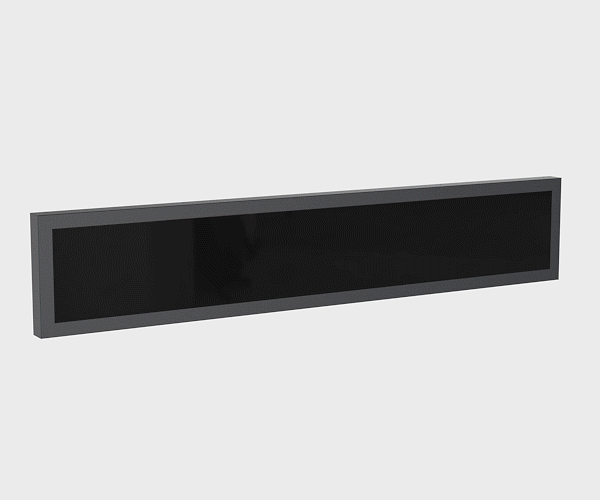
Stretched Displays

Stretch your business possibilities with Senevo Digital Signage retail shelf displays. These retail shelf displays are also known as stretched or bar displays . This innovative signage which looks fantastic is quite suitable for your wide images and videos.
Large extra wide displays are ideal for displaying panoramic content and catching the audience’s attention in advertising and digital signage applications, while smaller sizes are commonly used in appliances, kiosks, mobile devices, flight simulators, and gaming machines.
They are used in numerous areas which include retail, automotive dealerships, public transportation, advertising, corporate, restaurants, and many other applications around the world.
OUR PRODUCTS

All You Need To Know About Stretched Bar LCD Display
Retail shelf LCD displays, also known as bar-type displays or stretched displays, are specialized LCD panels with a unique aspect ratio. Unlike traditional rectangular screens, stretched bar displays feature an elongated shape with a much wider width compared to their height. These displays are commonly used in various digital signage applications where space is limited but the need to convey information is high.
With their distinctive form factor, stretched bar LCD displays offer several advantages. they maximize the utilisation of limited spaces, making them ideal for transportation systems, retail stores, public venues, and other environments where traditional displays may not fit. Their elongated shape allows for efficient content delivery, enabling businesses to showcase compelling visuals, advertisements, and other information in a visually appealing manner.

Stretched Bar LCD Displays Parts
In recent years, retail shelf LCD displays have gained popularity due to their unique shape and versatility. These elongated screens find applications in various industries, from retail and transportation systems to hospitality sectors. Understanding the inner workings of these innovative displays can help us appreciate their functionality and practicality.
What Are Stretched LCD Displays Used For?
Retail shelf LCD displays have proven to be highly versatile and effective in a variety of applications. Their elongated shape allows for efficient use of limited spaces while their high-resolution capabilities captivate audiences and provide valuable content. As technology continues to advance, we can expect even more innovative uses for stretched bar LCD displays, further revolutionizing the way information is presented and experiences are created in various industries.
Digital Signage FAQs
Senevo Digital Signage has become a digital signage supplier for 15 years and we have encountered all kinds of problems, here are the most important concerns of our customers before closing the deal.











